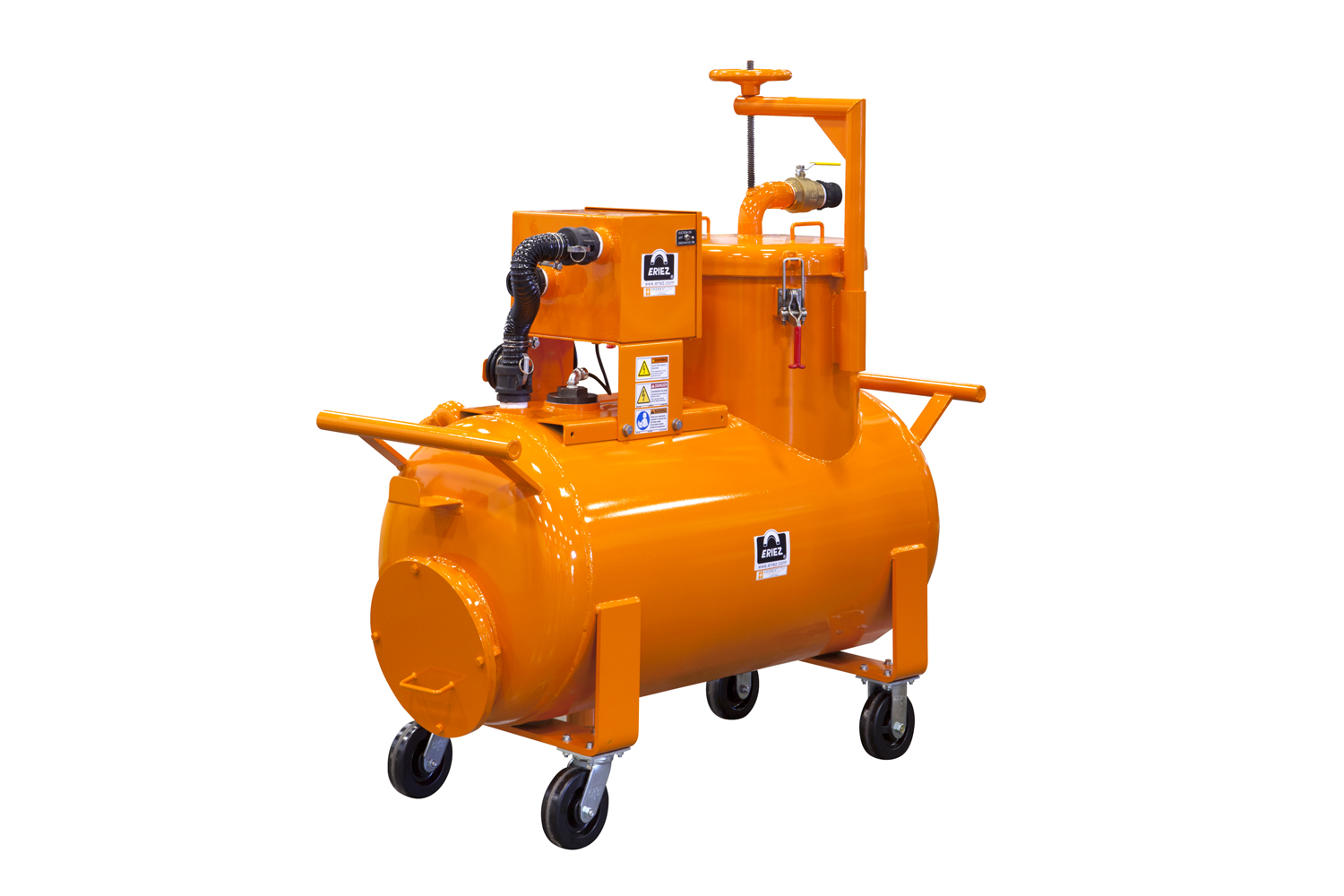
Eriez released a white paper for the metalworking industry, “A Guide to Portable Sump Cleaners: Lower Labor Costs, Eliminate Machine Downtime and Maximize Coolant Life.”
The white paper, written by Eriez technical sales representative Clay O’Dana, explains that powerful portable sump cleaners generate up to 110 gallons per minute of suction to eliminate sludge and chips.
According to Eriez data, a sump cleaner will thoroughly clean a CNC machine tool sump with 50 gallons of coolant and 20 pounds of sludge in 10 to 15 minutes, including time to rinse out hard-to-reach areas and stubborn sludge buildup. Filtered coolant is then returned to the sump for reuse.
According to the white paper, portable sump cleaners deliver a quick return on investment (ROI) by reducing labor and cutting fluid requirements, increasing and optimizing machine uptime and performance, and extending coolant life.
Eriez reports that a northeast-based manufacturer utilizing Eriez portable sump cleaners is successfully decreasing machine sump cleaning times in its plant by 75% and cutting oil costs in half when compared to its previous approach. With savings of $70,000 annually in cutting fluid alone, the company’s total payback from sump cleaning is over $150,000 a year when labor savings and reduced downtime are considered.
To download “A Guide to Portable Sump Cleaners: Lower Labor Costs, Eliminate Machine Downtime and Maximize Coolant Life,” click here.
Contact Details
Related Glossary Terms
- computer numerical control ( CNC)
computer numerical control ( CNC)
Microprocessor-based controller dedicated to a machine tool that permits the creation or modification of parts. Programmed numerical control activates the machine’s servos and spindle drives and controls the various machining operations. See DNC, direct numerical control; NC, numerical control.
- coolant
coolant
Fluid that reduces temperature buildup at the tool/workpiece interface during machining. Normally takes the form of a liquid such as soluble or chemical mixtures (semisynthetic, synthetic) but can be pressurized air or other gas. Because of water’s ability to absorb great quantities of heat, it is widely used as a coolant and vehicle for various cutting compounds, with the water-to-compound ratio varying with the machining task. See cutting fluid; semisynthetic cutting fluid; soluble-oil cutting fluid; synthetic cutting fluid.
- cutting fluid
cutting fluid
Liquid used to improve workpiece machinability, enhance tool life, flush out chips and machining debris, and cool the workpiece and tool. Three basic types are: straight oils; soluble oils, which emulsify in water; and synthetic fluids, which are water-based chemical solutions having no oil. See coolant; semisynthetic cutting fluid; soluble-oil cutting fluid; synthetic cutting fluid.
- metalworking
metalworking
Any manufacturing process in which metal is processed or machined such that the workpiece is given a new shape. Broadly defined, the term includes processes such as design and layout, heat-treating, material handling and inspection.

